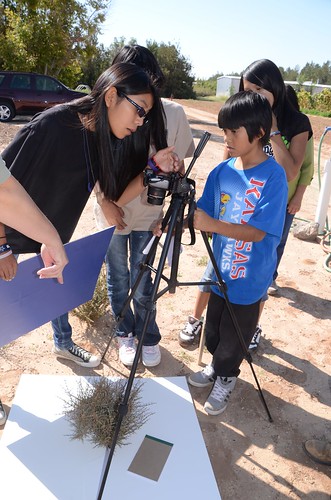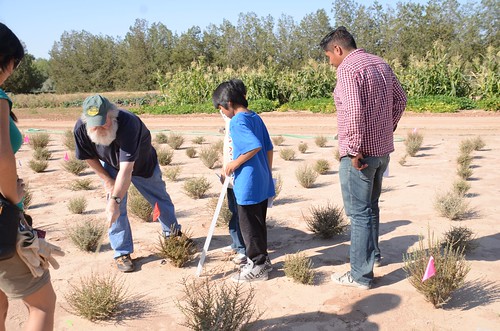
This post is part of the Science Tuesday feature series on the USDA blog. Check back each week as we showcase stories and news from USDA's rich science and research profile.
Known for its vibrant culture, distinctive art, and customary traditions rooted in Native American pottery and connection to the land, historians consider the Pueblo of Acoma to be one of the oldest and continuously inhabited communities in North America dating back to 1150 A.D. Determined to foster that connection to the land with today’s generation, USDA Forest Service Rocky Mountain Research Station Albuquerque lab scientists partnered with USDA Natural Resources Conservation Services Los Lunas Plant Materials Center to host a minority outreach natural resources science day camp for the Pueblo of Acoma tribal youth.
Middle school students from the pueblo, located near Grants, New Mexico, embarked on an academic journey by learning lessons on the scientific method, data collection, and western shrubland restoration needs at a research common garden plot at the Los Lunas Plant Materials Center, which is used to study the adaption of blackbrush (Coleogyne ramossisima) shrub populations.

Equipped with the know-how, the students immediately put their newly developed scientific skills to use by participating in a hands-on data collection exercise, observing visual differences in plant morphology, quantifying those differences by measuring plant height and crown diameter, calculating parameter means for several diverse shrub populations, and ultimately photographing individual plants which, when combined with imagery software, are used to quantify exact canopy cover.
With many great jobs available in food and agriculture, the Los Lunas Plant Materials Center Manager Gregory Fenchel spoke to the students about the importance and value of a scientific education as a stepping-stone into well-paid scientific professions. “It was great mentoring these kids to consider potential careers in conservation by pursuing higher education,” said Fenchel. “With these [learned] conservation tools, they can take this knowledge back to their communities and tribes to help sustain environmental goals.”
Excited about the opportunities ahead, the students didn’t let a little lunch disrupt the learning exploration. While dining at a restoration site in a cottonwood bosque forest along the Rio Grande River, the students collected more data, this time—plant survival data on native shrubs. “It was a good day to expose the kids to science,” said Rocky Mountain Research Station Research Ecologist Rosemary Pendleton. “Because rivers are the life blood down here, the kids can connect the importance of science to the environment.”
To find out how USDA Forest Service partners with other agencies to help educate and motivate tribal youth, click here.

